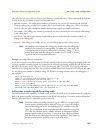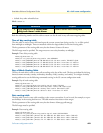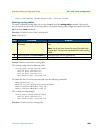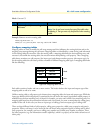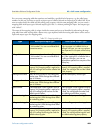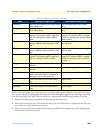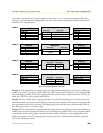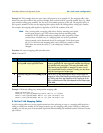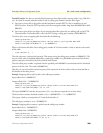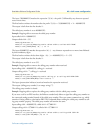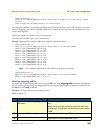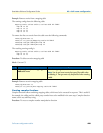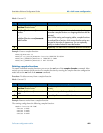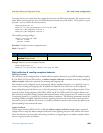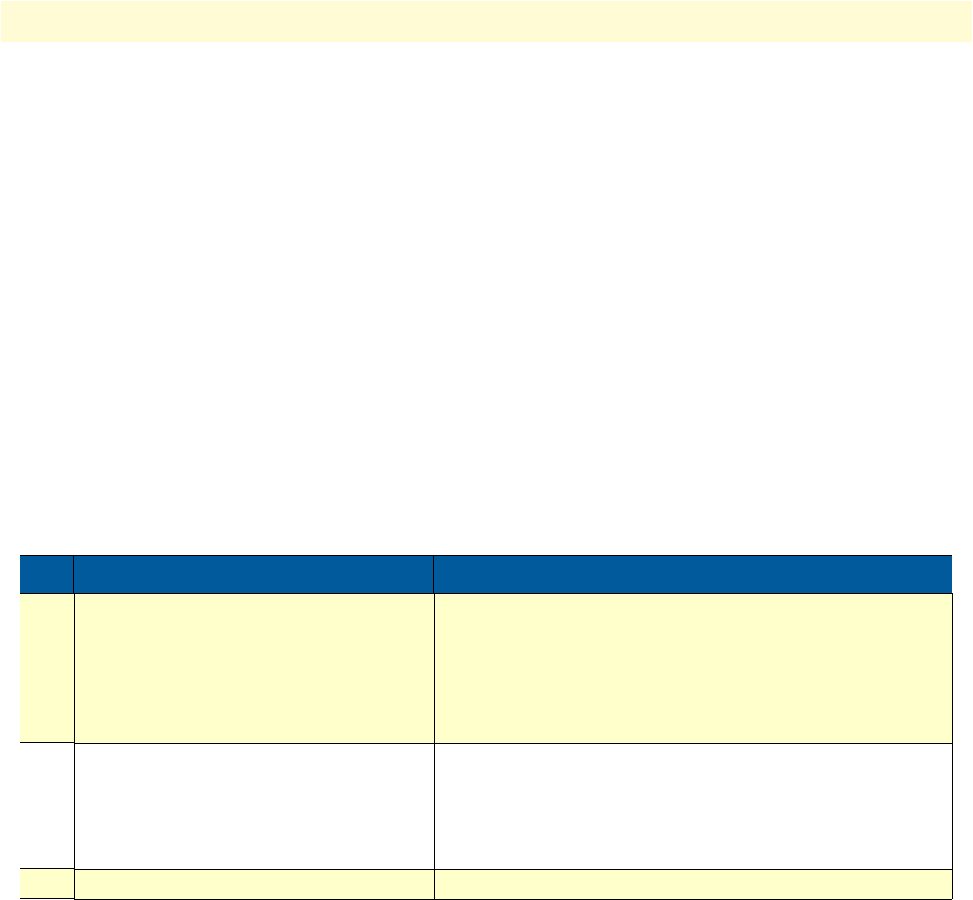
Call router configuration task list 485
SmartWare Software Configuration Guide 40 • Call router configuration
Example #4: This example shows the same input call properties as in example #3. The mapping table is also
almost the same, but unlike in the previous example, here we don’t look for a specific number type (e.g. called
party number, calling party number), but for any E.164 number property of the call. The output property is
also a generic number. In this case the mapping table replaces both, the calling and the called party number.
For example, the mapping table applies its algorithm to all E.164 numbers of the call.
Note Like a routing table, a mapping table selects the best matching entry based
on the input property type. This is done using the best matching prefix
method for E.164 numbers and string compare for other properties. Unless
you don’t have a default entry in a mapping table, no action is performed
when no match can be found and the call is not dropped. In the above exam-
ple #3, if a call arrives the mapping table with a called party number of 200,
which does not match the entry (1..), the called party number is not
changed.
Procedure: To create a mapping table and add entries
Mode: Context CS
Example: Called and calling party manipulation mapping table
node(cfg)#context cs
node(ctx-cs)[switch]#mapping-table e164 to uri SETURI
node(rt-tab)[SETURI]#map 100 to sip:john.smith@nil.net
node(rt-tab)[SETURI]#map 101 to sip:jane.smith@nil.net
E.164 to E.164 Mapping Tables
As with routing tables you can use regular expressions when selecting an entry in a mapping table based on a
calling or called party number. If the output property type of a mapping table is also a calling or called party
number, you may use parts of the matched expressions when building the modified number as shown in exam-
ple #3 above.
Step Command Purpose
1 node(ctx-cs)[switch]#mapping-table
input-type to output-type table-name
Create a mapping table table-name that examines the call
property specified with input-type and modifies the call prop-
erty specified with output-type. This enters the table mode
where entries can be added or removed. To enter a previ-
ously created table from the context CS mode, you may leave
away the input-type and output-type.
2 node(map-tab)[table-name]#map key to
value
Add an entry to the mapping that sets the output-type call
property to value if the output-type call property matches the
key. The format of the key depends on the input-type of the
table, and the format of the value depends on the output-type
of the table.
3 Repeat step 2 to add lines for additional table entries.



